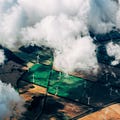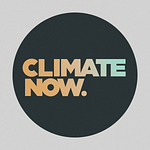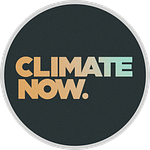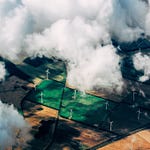Episode Summary
On today’s Climate News Weekly episode, Dina Cappiello recaps her Climate Week NYC experience. We discuss the International Energy Agency’s updated 1.5°C scenario, including an in-depth explanation of what a “scenario” is, China’s strong stance against phasing out fossil fuels, and the potential promises of Fervo Energy’s newest geothermal plant breaking ground.
Transcript
James Lawler: [00:00:00] Welcome to Climate News Weekly. I am here with Dina Cappiello and Julio Friedmann. Hi guys.
Julio Friedmann: Pleasure as always.
James Lawler: So this past week, we've got a lot of stories to discuss, but first, Dina was at Climate Week NYC, which we're very excited to hear about. So Dina, tell us about Climate Week. What was that like? What did you learn?
Dina Capiello: I think my favorite headline was "it's the burning man for climate geeks" which the New York Times coined. It did seem this year to have, like, a lot of fanfare that it typically didn't-, you know, like sustainability drag queens, but in all seriousness, you know, Climate Week is one of those events where it's not about what the official event is. It's about what's happening all around it.
And, you know, I think a couple things emerged from my perspective and, depending on the path [00:01:00] that you took through the week, you'll have different perspectives. And one thing that was talked about a couple times over the course of the week is how the phase out/ban fossil fuels message seems to be weakening.
That's based on research, that's based on the size of the protests, which was the smallest in seven years. So that I thought was really super interesting.
Julio Friedmann: Why is that? And can you explain how it's weakening in which direction?
Dina Capiello: That it's not resonating with a big variety of audiences. And there was a lot of, you know, discussion, James, as to why. That was all conjecture; I can guess, which is, you know, from the protest, civil disobedience side, you know, how much change has really happened with fossil fuels, given those protests. What impact have they driven?
And then I think, like, a growing realization- and this is definitely my organization's view- that we [00:02:00] can't turn this spigot off overnight and that's not realistic either, right? And, and if we did that, that other people, particularly those in the global South, would probably lose, right?
So I, I, I just think it's really interesting and there was a lot of discussion among the environmental community in numerous places about, you know, do we have to kind of rethink how we approach this because the environmental community’s origins are to be against things rather than for things.
And, as you know, RMI is a very pragmatic, forward-looking organization. So that- maybe I'm picking this because it kind of verifies our approach. I think the other thing that emerged, obviously we had the finance principles that the Treasury Secretary announced at the event. In the beginning of the week, you had the huge announcement from Bloomberg [00:03:00] philanthropies.
Mike Bloomberg's on the stage with Gina McCarthy talking about his campaign.
James Lawler: What is that?
Dina Capiello: He's doubling- so, you know, he did the Beyond Coal campaign, which was focused on, on coal-fired power plants. That has evolved to beyond carbon. And his big announcement was $500 million to basically vastly reduce natural gas and literally get rid of coal in the United States.
James Lawler: So $500 million spent how?
Dina Capiello: To fund, I think, efforts on the ground to help resist new expanding plants. The New York Times covered this and really called it a war on petrochemicals since a lot of our natural gas goes into petrochemical production. So it was a huge announcement on Monday.
And then finally, I just think that there is a huge opportunity, um, particularly with methane. This is- we have no cost-proven technologies to reduce methane. [00:04:00] We're going to have to reduce it, regardless of how much we decline fossil fuels. We're going to have to deal with mitigating, reducing methane. And there was a lot of talk in a lot of corners about how that's the low hanging fruit. So those are, I mean, like, those are my top-level reflections.
Again, depending on who you ask, you're going to get a different set of reflections, just because it's one of those kind of, like, choose-your-own-adventure kind of events.
James Lawler: Great. Julio, any thoughts on any of those items?
Julio Friedmann: Yes. So, for starters, I'm, I'm glad to hear that the polling is in on this. I think it, it's sort of a distinction without a difference.
We'll come back to that when we talk about China, but you can't actually phase out without phasing down first. Like it's, it's kind of where we're at with respect to Climate Week. I was not there. I was doing something marvelous instead: taking my son to college. But the news from the front, we ha-, we had a large presence there.
And from my colleagues at Carbon Direct, there was a couple of things I would add. The biggest of these is just that the all-of-the-above messages also started to take hold. We [00:05:00] were seeing stuff on industrial heat, and we were seeing stuff on, uh, CO2 removal. We were seeing stuff on small modular reactors, like we're getting- the full panoply of climate solutions is coming in.
There was real discussion of, uh, adaptation. There was real discussion of differentiated responsibilities. There was real discussion of developing nations’ energy access. There was real discussion of climate justice. And so it's good to see the full compass now that we have come to see represented in the climate community represented at Climate Week.
James Lawler: Yeah. So next up, the IEA revised 1.5 scenario that they've published. And so let's talk about this. So first of all, what was the first 1.5 scenario? Number two, why are we revising it? And number three, what does the revision say?
Julio Friedmann: Sure. So lots of things here. So first of all, [00:06:00] people often don't even understand what a scenario is.
James Lawler: Yeah.
Julio Friedmann: Let's do scenario 101, okay? A scenario is not a forecast. It is not a projection. Instead they say, "if we have to do this thing, how is it going to get done?". But it's also not a Gantt chart. It doesn't sort of lay out the map for how you actually do these things. And these are typically based on integrated assessment models, which look at the technology readiness and the economics.
The IEA is very good at these sorts of things in general. They're one of the better groups in the world that does it. These exercises are also data-rich. You need huge amounts of information going into that. And the IEA has that data-
James Lawler: International Energy Agency, IEA.
Julio Friedmann: -and so when you see a new IEA scenario, people pay attention to it because they want to understand what's behind it.
In 2021, they did their first net zero 1.5 scenario. And by that, it is 1.5 by the end of 2100 [00:07:00] and it is net zero by 2050. So the scenario has those as constraints. You have to be net zero by 2050.
James Lawler: Okay, so, and then, so how does it say we, we do that?
Julio Friedmann: Right, so they, they published the scenario and then they updated it two years later.
And they updated it two years later because a lot's happened in two years. They have better data on electrification and renewable buildout. A lot of policy measures have passed around the world, so they are- we have EV information that we didn't have before. And so they were like, “let's get an update on this”.
So a couple of things are sort of counterintuitive, but they're what you see. One of them is that emissions go up because we've delayed, actually. One of the things this means, though, is that the time window is smaller. And so what it means is that some of the things end up getting smaller instead of bigger to hit the same target.
Another thing that's happened is literally we've gone from 2021, which was nine years, to 2023, which is seven years for 2030, and so a number of things just got [00:08:00] pushed out of the 2030 window. They get bigger in like 2032 or 2035, right? So, uh, you see less offshore wind as an example of that, the global deployment of offshore wind goes down between now and 2030 because we're deploying more slowly.
That is also true for green hydrogen. That is also true for nuclear. That is also true for carbon capture. A lot of things that take 10 years to deploy look smaller in this scenario. And specifically, one of the consequences this has is if you go smaller within a time frame, other things take that space, actually.
You might see lower wind deployment, but there's wildly more solar deployment and solar plus batteries and EVs.
James Lawler: That's required.
Julio Friedmann: Well, not only required, the IEA correctly says we have data that deployment has gone faster than we've expected. So we got more solar, we got more batteries. That's great, you know, and so more of the abatement can be done by this.
The last thing I'll say about the scenarios is that scenarios [00:09:00] are, fundamentally, an Excel spreadsheet. Really, that's what they are. And so if you have to solve for zero and something is not doing a job, something else has to do a job. So for example, you see almost 25 percent of the abatement by 2050 is done by behavior changes and efficiency gains.
And to be clear, those are efficiency gains beyond what we normally do on efficiency gain. So it's much more dramatic improvements in efficiency and a lot of behavior changes. Cause if they can't make the math work, they're like, “I guess we'll do behavior change”. Like that's, that's the way the spreadsheet works.
James Lawler: Okay. So let me ask you something about this spreadsheet. Is the scenario based on- I guess, to what degree is the scenario based on things we know are possible based on historical rates of change and deployment? And to what degree are things, well, we must do these things in order to achieve them, but we don't know how?
Like, like, how much of each is in this special sauce of a scenario?
Julio Friedmann: Yeah, it ends up [00:10:00] being a mix of both, and those end up getting described by the modules that are in the scenarios. So, for example, in the scenarios, transmission build out is frictionless. It just happens. It, it, it doesn't speak to the plausibility of such things.
But if there is actually a non-availability of something like copper, a scenario might put that in as a limit and say, “hey, there's not copper, we can't build a transmission”.
James Lawler: Yeah.
Julio Friedmann: And for a given module, they might have an arbitrary cap for, like on biofuels, they might say, “hey, there's not enough land, so we've got to stop biofuels here”, you know. So, so it's kind of a mix of these things.
Importantly, and this is something to understand about a scenario: it's like I said, it's not a forecast. It's not a projecti- projection. There's also nothing in here saying this is likely to happen. There's no, like, political gaming or anything like that around. It, it is, it is simply this is how this- these equations solve.
James Lawler: Right. It's like this is a potentially plausible path.
Julio Friedmann: Right. And so, for example, they added [00:11:00] 200 gigawatts of solar to make the thing solve. That is a lot of solar, okay? Is that feasible or not? Is that likely or not? It doesn't say anything about it, but it says we can solve this model by having more solar and less carbon capture.
You know, that's a way to solve the system.
James Lawler: Right. Right.
Julio Friedmann: And so people- and I'm going through all this because people have been reporting this as like, "hey, green hydrogen has been downgraded". And the answer is no, it hasn't been downgraded. This is the way the scenario is solving this, right?
It's not movies, like they haven't put out a rating but, but it is the case that in this new scenario, because certain things take time to deploy, because certain things take that opportunity space, if you will, it's slightly shifted the things. The take home I want the audience to get from this is that we've learned something in the last two years. And because we've learned something in the last two years, the IEA said “let's rerun these scenarios”.
James Lawler: Right.
Julio Friedmann: And so we, we, we've seen a different [00:12:00] sort of mix in the Bouillabaisse for how to solve for 1.5.
Dina Capiello: But listen, I mean, there's other people that are doing these scenarios beside the IEA, right? There is real data on the ground about renewable growth and EV growth. We have historical examples that are not in the energy space of exponential S curve growth, right, that have happened in the past.
And so, when we looked at it at RMI, and this is my colleague, Kingsmill Bond, who you've had, you've interviewed James, you know, I mean, his overall headline of this- and again, it is a scenario, right?- Is that the energy transition, there's a chance to get to 1.5 degrees. We have known that, right? We can argue about how big of a chance, I think it's about 50/50.
They're- due to the rapid growth in clean energy and, and, you know- [00:13:00] what this kind of said is we have a lot of the tools that we need. They just need to be deployed, including efficiency, solar, wind, batteries, EVs, heat pumps, green hydrogen. One of the keys is to triple renewables development, right? Um, and double efficiency, right? As well as speeding up electrification and cutting methane.
But we looked at this, the overall headline, as this is portraying, like, a better picture than the IEA has in the past. And the IEA has come under a lot of criticism for how it does its calculations and its assumptions and has been pretty pessimistic in the past.
Um, but this is, I think, really a positive, right? That there is a path forward. There is a chance to get there if we kind of triple down, double up, so triple renewables, double efficiency.
James Lawler: Great. Well, we will link to the report. Another story we want to [00:14:00] cover is China making statements in advance of COP 28 on the unrealistic notion of phasing out fossil fuels.
Julio, I'd love to hear your thoughts on the language that was used by China's climate envoy at this meeting where he made these remarks and what we should make of these remarks.
Julio Friedmann: Right. So let's start by saying there's nothing new here. This is the kind of negotiation that China has done for a very, very long time.
Second of all, they are certainly using more fossil fuels. They continue to build coal plants, they continue to use internal combustion engines, and this is the complexity of China. They can be the world leader on battery EVs and also buy more oil like, this is how they are.
James Lawler: And renewables deployment.
Julio Friedmann: They're very much in a nationalistic phase right now. So this is as much saber rab- saber rattling around sovereignty as it is about climate.
James Lawler: Right.
Julio Friedmann: But it also goes to the core of what Dina was talking about before. [00:15:00] They have already said they're going to be net zero by 2060.
They're like “okay, we're going to be net zero by 2060. What are you guys complaining about? And whether we do that with phasing out or phasing down is irrelevant. So we're not going to accept a phase out language. We're going to do what we want to do”.
And this is pretty much the same kind of language that India used a few months ago.
James Lawler: In August of 2021, Climate Now published an episode featuring three China experts that really dissected politics in China and sort of where and why you see comments on the importance of coal, the importance of fossil fuels and how those comments connect with, sort of, the incentives that are embedded in the political hierarchy in China.
It's a great episode to untangle sort of when this stuff happens. But one of the key themes, Julio, as you alluded to, but just one additional point, I think, is that coal has always meant jobs in China. And so when people talk about “we're going to create more coal plants”, you should think about that as, you know, someone saying “we want to create more jobs”.
It's a, it's a critical lever for [00:16:00] sort of shoring up domestic support for, you know, the regime in China is, is the ability to create these jobs through, you know, deployment of coal. It's something that lots of people and, sort of, political hierarchy really understands.
So it's part of nuanced political calculus about when you hear these statements, and there's more going on than just, you know, we're going to keep emitting.
Julio Friedmann: So, and last thing about this, it is likely that this will also be paired with some spectacular announcement at the COP. They will probably not just be nabobs, they'll probably be like, “oh, and we're doing this other incredible Herculean thing”.
James Lawler: Right.
Julio Friedmann: “We like to do these sorts of things. You can't tell us what to do, but we're doing better than you anyways”. Like that, that's the Chinese position.
James Lawler: Right. One great story: Fervo Energy broke ground on a major facility. Julio, can you tell us about this?
Julio Friedmann: Yes, so Fervo is a really interesting company that does a- geothermal heat recovery in a new way.
It's what people have sometimes called enhanced geothermal or hot dry rock. And basically what they're doing is they're going to [00:17:00] places without a lot of geothermal brine heat and they are making a new system just wherever. If this can work, it is a huge resource and a huge opportunity. It's transformational if Fervo can get the job done.
And they had an announcement a few months ago where they said, “we've had a technical breakthrough. We can do this”. And so now they're putting their money where their mouth is. They're drilling wells. They're getting their project, uh, rolling and within a couple of years, we'll know if it's operational. Uh, as a geologist, as somebody who's worked on geothermal systems before, what they're trying to do is really, really hard.
It's really hard. So I don't know if they're going to succeed or not, but all eyes are on Fervo. And if they do it, you know, it will be incredible in terms of the opportunity space for geothermal production.
James Lawler: And to put some numbers around that, and correct me, Julio, if I'm wrong here, but I believe some estimates put- if it does work, peg the total capacity of [00:18:00] geothermal in the United States at 90 gigawatts by 2050 if it's built out in a very aggressive, in an aggressive way if it works and is built out quickly.
Which, you know, total capacity in the US, in terms of energy generation is about 1200 gigawatts today, putting this at, you know, a little under 10% if this were, you know, not counting, of course, how that might- how that's going to increase over time. But, but it's a substantial portion. It's, it's up to 10 percent, potentially, of our, of our total generative capacity, if it works.
Julio Friedmann: Right. So there's a lot of ifs in there.
James Lawler: Lots of ifs.
Julio Friedmann: The bottom line is that geothermal has been one of these unloved opportunities. It really could deliver big, but it's really hard. And it's hard because of capital costs, it's hard because it's tough to get the heat out of the ground. Fervo is the best we've seen in a very long time to try to do this, so I'm excited and I wish them well.
James Lawler: Yeah. And it's also very interesting in the context of these IEA scenarios, like where we have these breakthrough, you know, potential for these breakthrough technologies and ways [00:19:00] of doing things that are probably not contemplated in those scenarios, and yet we're talking about them because they're happening.
Julio Friedmann: Right. All of these scenarios are limited by their priors. They have inputs, and it's not a fault. It's just the way they're built. It's how- it's what it means. But if we had a break here, for example, on sustainable aviation fuel, it would take a few years before that enters the scenarios.
James Lawler: Yeah.
Julio Friedmann: Same thing for geothermal. Same thing for high altitude wind. Like, the way that these things are modeled- again, they're not forecasts, they're working with what they have.
James Lawler: Right.
Julio Friedmann: I look forward to including all of these things we like so much into the future surround of scenarios.
James Lawler: That's right. Thank you so much, Julio and Dina, for joining us today, and it's great to see you guys.
That's it for this week's episode of Climate News Weekly. We hope you'll join us next week.
Climate Now is made possible in part by our science partners like the Livermore Lab Foundation. The Livermore Lab Foundation supports climate research and carbon cleanup initiatives at the Lawrence [00:20:00] Livermore National Lab, which is a Department of Energy applied science and research facility. More information on the foundation's climate work can be found at livermorelabfoundation.org.











Climate News Weekly: Climate Week NYC recap, IEA's new 1.5°C scenario, new geothermal plant, and more